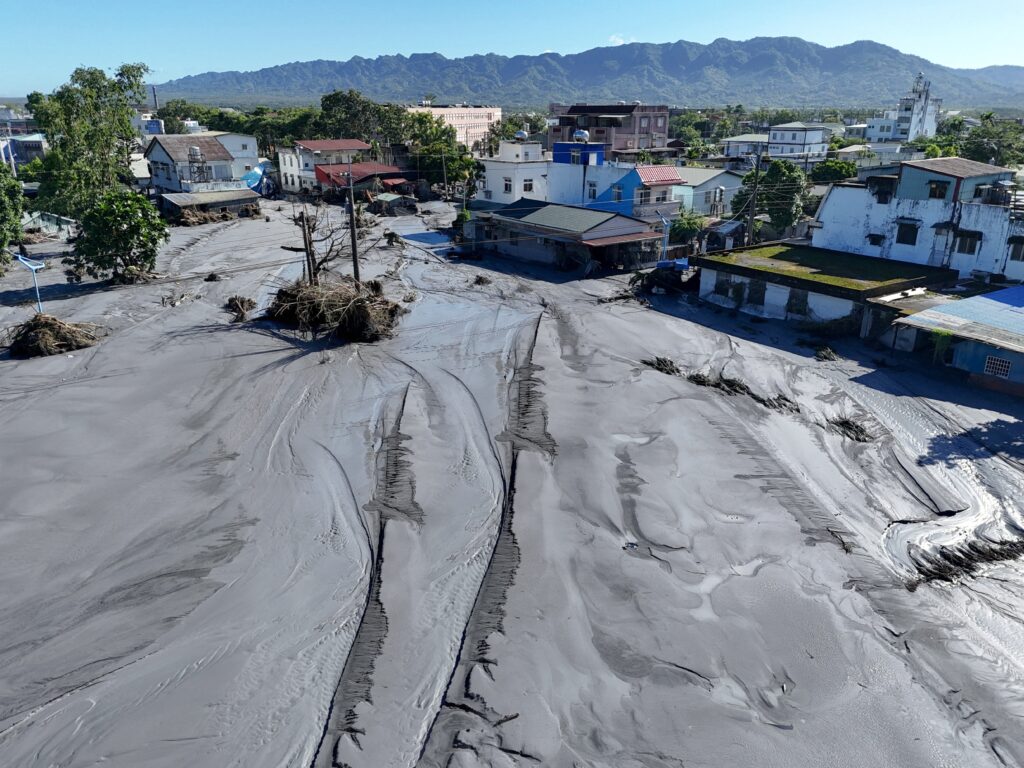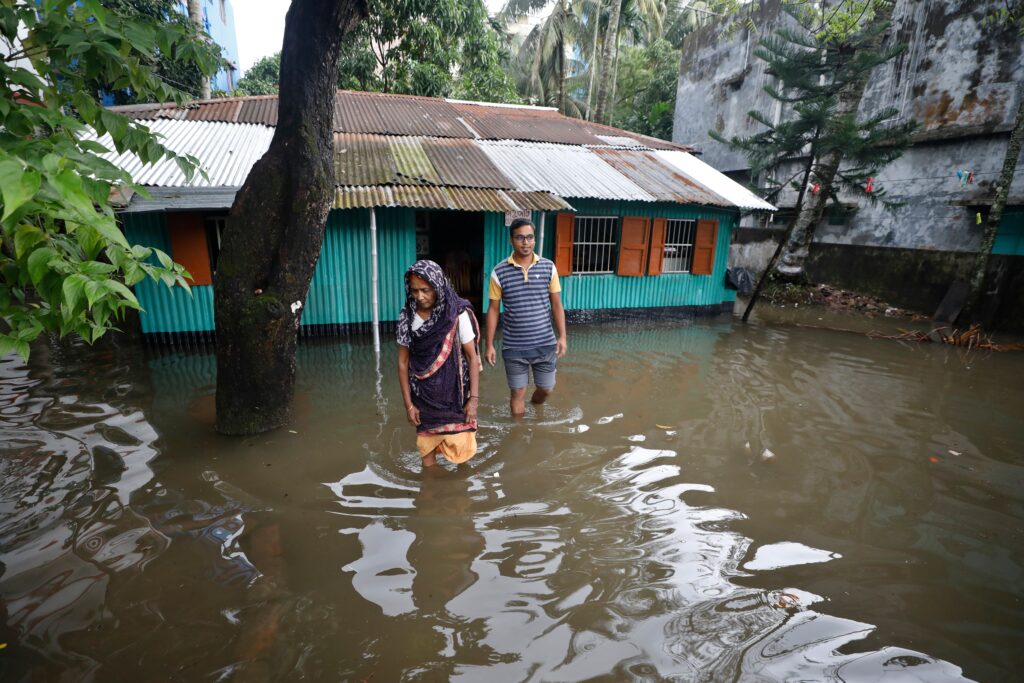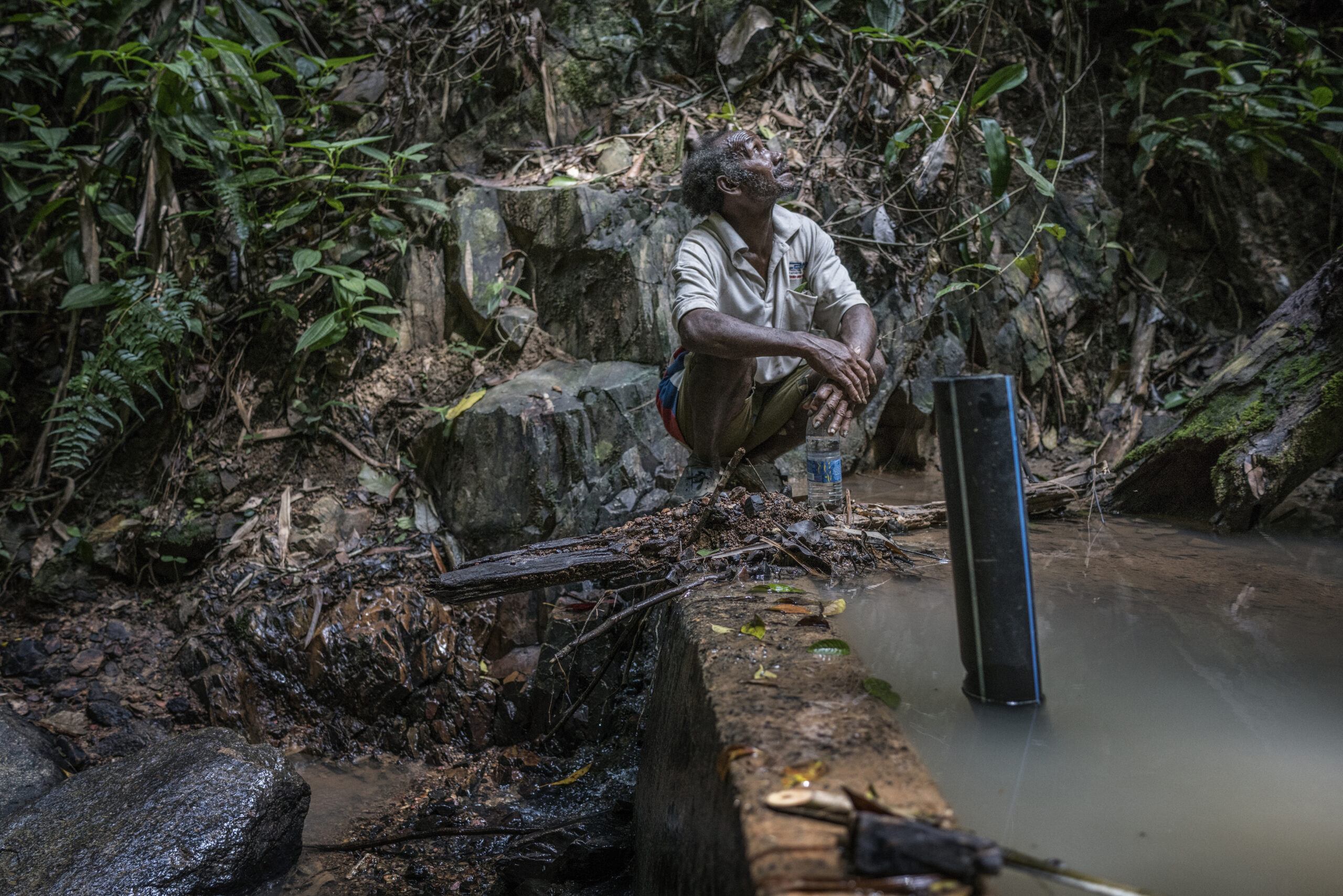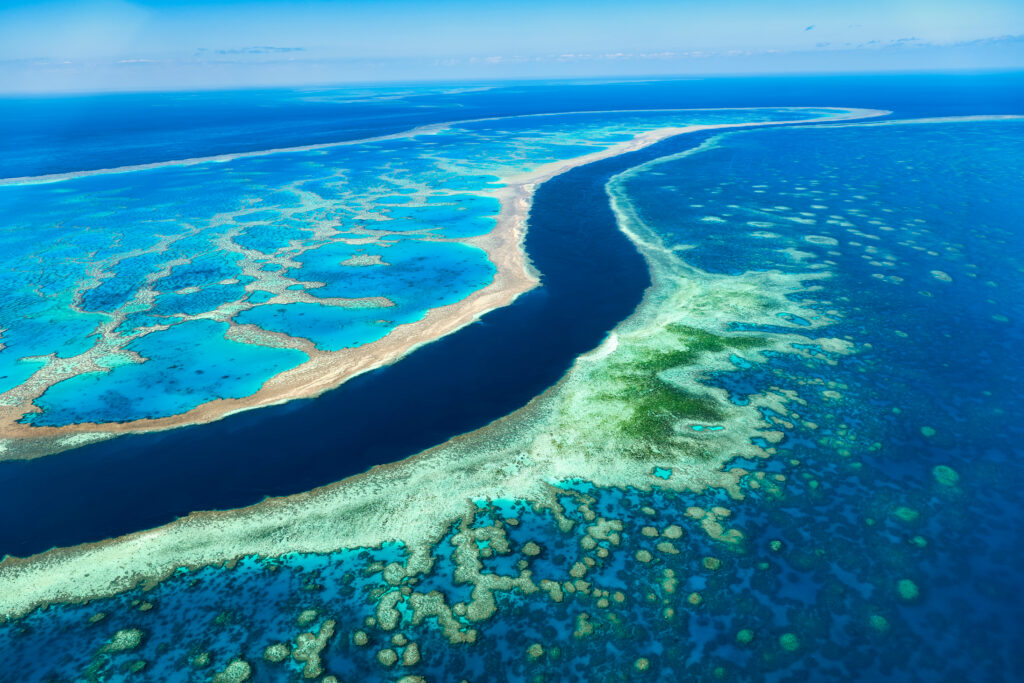The highest sea surface temperatures on record, never-before-witnessed six typhoons in 30 days hitting the Philippines, the worst flooding season in Central Asia, extreme rainfall and major landslides in India, record drought in China, monthly average temperature records broken one after another in Japan, Korea, China and Myanmar — 2024 was a textbook example of what an intensifying climate crisis looks like.
Yet, despite all the warnings of what’s to come if governments don’t accelerate emissions reduction efforts, delegates are continuously failing to find common ground regarding the timeline and the semantics of the Intergovernmental Panel on Climate Change’s (IPCC) Seventh Assessment Cycle Report (AR7). The analysis, which will be undisputedly the most critical climate science work to date, will illustrate how far the world has come in its efforts to reduce emissions and reveal the consequences of not doing what’s necessary to protect the most vulnerable.
On the 10th anniversary of the Paris Agreement, emissions are at record levels, and governments need to put their differences aside, uniting behind the overarching challenge of our time. The first steps — agreeing on the structure and timeline for the IPCC’s AR7 report and submitting ambitious, 1.5°C-aligned Nationally Determined Contributions.
Still No Deadline For the Seventh Assessment Cycle Report (AR7) of the Intergovernmental Panel on Climate Change
The last IPCC meeting in Hangzhou, China, held in March, was the third time that governments disagreed on a timeline for the AR7 report.
According to Carbon Brief, a large group of countries, including the UK, EU, Australia, Japan, Turkey and Jamaica (speaking on behalf of other small island developing states), pushed for finalising the reports by the end of 2028, to feed into the UN’s second Global Stocktake. This mechanism will track progress towards the Paris Agreement goals. Others, including the China, India, Saudi Arabia, Algeria and South Africa, argued that the deadline is rushed and would potentially restrict the participation of developing nations. Instead, they suggested completing the AR7 report in the second half of 2029.
India, Russia and Saudi Arabia also opposed various other items on the agenda and details about wording, further delaying progress on important matters. Furthermore, according to reports, there had been an evident disconnect between Chinese officials’ public statements about supporting cooperation on climate change and their positions in closed-door negotiations, including trying to keep the next round of IPCC reports out of the next Global Stocktake.
Importantly, representatives of the Union of Concerned Scientists, an IPCC observer organisation present at the meeting, shared that some delegations intentionally pushed for weakening the scientific language or removing key terms and phrases in the outlines. Notable omissions include terms related to fossil fuels, the cost of inaction and subsidies, which were largely avoided or watered down.
While difficult discussions on topics such as CO2 removal technologies, CCUS and more marked the meeting, ultimately, delegates reached consensus on the outlines of the three working group reports and agreed on a decision that enables the author nomination process to begin. That way, the work on AR7 can now move forward.
According to Carbon Brief, IPCC chair Prof. Jim Skea described the process as “probably the most difficult session” he could recall, while the uncertainty around the timeline has put contributing scientists in a difficult position.
Delegates will convene again at IPCC-63 in late 2025, with the hope that they can finally break the deadlock around the AR7’s timeline.
Throwback to the 2023 IPCC AR6 Report, Identified Asia as a Climate Change Hotspot
Released in 2023, the AR6 Report is the latest synthesis report by the IPCC. Authored by over 700 scientists from 91 countries over eight years, the analysis found that in a very low emission scenario, warming would temporarily surpass 1.5°C by no more than 0.1°C before returning to 1.4°C in 2100. In a very high emission scenario, warming could reach 4.4°C by 2100.
The scientists warned that both climatic and non-climatic drivers, such as socioeconomic changes, have created water stress conditions in both water supply and demand in all sub-regions of Asia, except for North Asia. They found, with high confidence, that due to global warming, Asian countries could experience an increase in drought conditions (5–20%) by 2100. Furthermore, an increase in the frequency and severity of storm surges is also highly probable.
The findings indicate that several densely populated Asian countries, including the Philippines, Indonesia and Bangladesh, remain at an exceptionally high risk of sea level rise, including both coastal and riverine flooding. Glacier melting and seasonal downpours also threaten countries in Southeast and South Asia, especially cities near big rivers.
The report focused extensively on the impact of climate change on communities, noting that they negatively affect the services and livelihoods of people depending on coastal habitats and warned of the risk of “irreversible loss of coral reefs, tidal marshes, seagrass meadows, plankton community and other marine and coastal ecosystems” at a 2°C temperature rise or more. According to the AR6, at 3°C warming, the number of endemic species in biodiversity hotspots at a very high risk of extinction would be 10 times higher than at 1.5°C.
The IPCC found that the climate-related risks to agriculture and food systems in Asia will progressively escalate with the changing climate. Among the major projected impacts are a decline in fisheries, aquaculture, crop production (particularly in South and Southeast Asia), a reduction in livestock production in Mongolia and changes in crop and farming systems across almost the entire Asia, with negative implications for food security.
In India, rice production is likely to decrease by 10-30%, whereas maize production could drop by 25-70% assuming a temperature increase of 1°C to 4°C. In Cambodia, rice production can decrease by 45% by 2080 under the high-emissions scenario. By 2080, the occurrence of pests would threaten the top Asian rice-producing countries, including China, India, Indonesia, Bangladesh, Vietnam, Thailand, Myanmar, the Philippines and Japan.
The report identified South Asia as a region particularly vulnerable to food security disruptions. The authors warned that even small amounts of additional warming can threaten food production and security in Asia due to already persistent extreme weather events such as heatwaves, droughts and floods.
Furthermore, the impact of extreme weather events in developing countries in South and Southeast Asia would be exacerbated by the fact that hundreds of millions of people remain below the poverty line.
Recent Scientific Work Shows a Worrying Trajectory
Since the last major IPCC report came out in 2023, global greenhouse gas emissions have only continued to increase, reaching a record high in 2024. In fact, the past year became the hottest on record, with global temperatures 1.55°C higher than pre-industrial times. The past 10 years have all been in the top 10 for the warmest in history.
According to estimates, current climate policies will result in 2.7°C of warming by 2010. Some studies estimate that warming of 2-3°C could cause between 2 and 4 billion human deaths and a 25-50% loss in GDP.
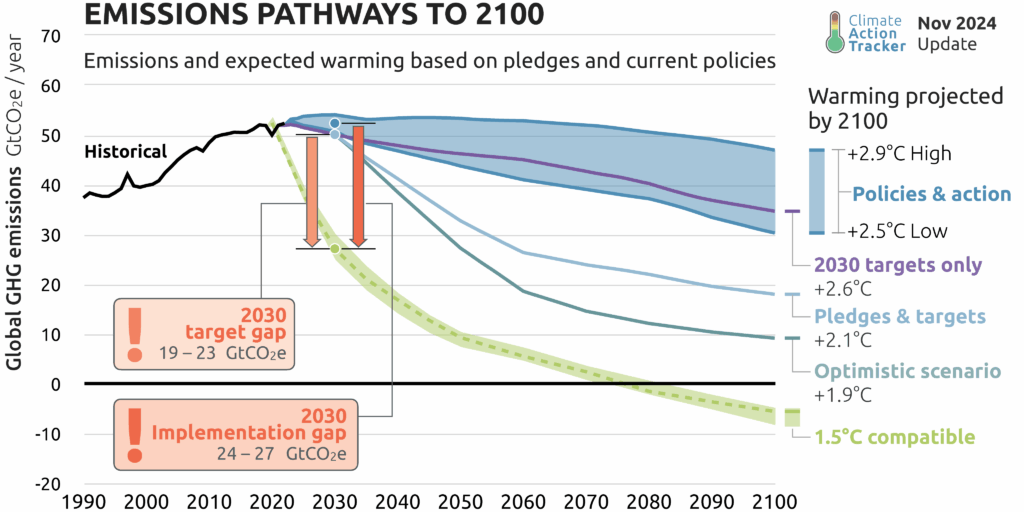
In its “State of Climate 2024” report, the World Meteorological Organization finds that Asia is warming twice as fast as the global average. According to the experts, this rate of warming, which shows no signs of stopping, is leading to devastating consequences for lives and livelihoods across the region, and no country is exempt from them.
Furthermore, the current rates of sea-level rise in Asia are found to be higher than the global mean rate between January 1993 and November 2024. The WMO also notes that, over the last year, glacier melting accelerated significantly.
The oceans around Asia are also experiencing temperature increases, with surface temperatures in the Indian and Pacific oceans reaching record levels in 2024. Last year, most of the ocean area of Asia was affected by marine heatwaves of strong, severe or extreme intensity. This poses a major threat to the livelihoods of frontline communities in coastal areas, as well as natural ecosystems.
According to the WMO, in 2024, Asia experienced 26 unprecedented and 37 unusual weather events, resulting in over 10,000 displaced people and 965 reported deaths.
In its “Asia-Pacific Climate Report 2024,” the Asian Development Bank (ADB) notes that climate change could happen faster than anticipated, with changes in the APAC region being greater than global trends indicate. Heatwaves are expected to increase several times by 2100, while peak daily precipitation will increase by 30-50% by 2100. ADB’s report also warns that the destructive power of typhoons and cyclones will approximately double in the region. The rates of relative sea-level rise across APAC, which are about double the global average, would threaten around 300 million people, while their impact would be exacerbated by climate change and increasingly destructive storm surges. Currently, APAC contains 70% of the global population at risk of sea-level rise.
The report also warns that climate-dependent sectors, including agriculture, forestry and fisheries, will face diminished output, with a 45% potential decline for wheat yields and over 20% for maize yields in parts of developing Asia under a high-end emissions scenario by 2070. Seawater warming and acidification would put reefs and fisheries at substantial risk, the bank warns.
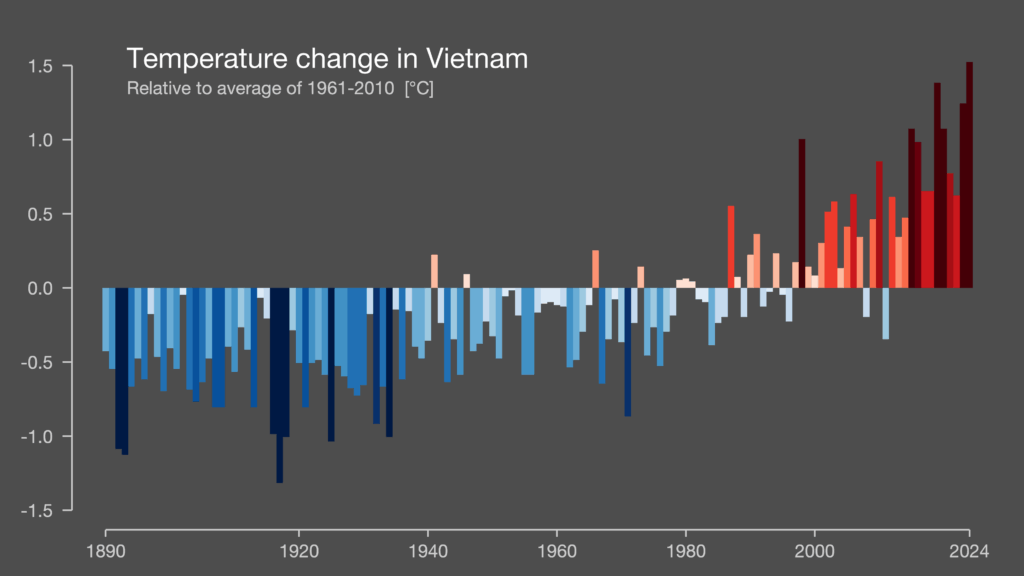
All those impacts would hit the most vulnerable and poorest people the hardest, with economic losses projected to be the greatest for some of the lowest-income economies.
Delegates Must Unite and Overcome Their Differences This Year to Accelerate the Work on the AR7
Once delegates agree on a timeline, whenever that is, they would have to start dealing with another problem: the backtracking of the US administration and the potential absence of its delegation, which would be the first in the IPCC’s history. This could prove a major stumbling block for the work of the IPCC since, according to Carbon Brief, the US has provided around 30% of the voluntary budget contributions since the IPCC’s establishment in 1988, four times that of the next-largest direct contributor, the EU.
Furthermore, around 18% of IPCC authors have been from the US, over twice the next biggest national contributor, the UK, Carbon Brief finds. While the Trump administration has prohibited US scientists from participating in the IPCC meeting, they can still work on the AR7 report if nominated through other channels, such as observer organisations.
Still, the fact that the US is moving backwards on climate action means it is even more critical for other countries to step in and fill the vacuum, just as they did when the US cut the funding for the IPCC and withdrew from the Paris Agreement during Trump’s first term.
However, this time around, the need for unity is even more critical, considering that the climate emergency has become ever more severe, while the carbon budget is on its last legs. The window for slowing global warming to 1.5°C is quickly closing, as the IPCC estimates that the world will permanently breach the threshold between 2030 and 2052 if warming continues to increase at the current rate. Тhe most vulnerable and the least responsible for the climate crisis are already feeling this firsthand, finding it increasingly difficult to deal with mounting and increasingly more severe weather disasters.
The climate crisis won’t wait for delegates to continue dragging their feet and wasting precious time in discussing semantics and timelines. The magnitude of the challenge necessitates standing united to finally unblock progress on key agenda items regarding the IPCC’s upcoming reports and bridging the gap between pledges and delivery with the 2035 NDC updates. And this year is the best and closest opportunity for it.
“Let’s not forget that climate change is an existential question. And so, what would be a crime is to forget about climate change because we need to concentrate on the more pressing issues of this moment,” said António Guterres, UN Secretary-General, in a recent address. “They are only theoretically more pressing. We are on the verge of making it irreversible to lose the 1.5° limit. And that is something we need to avoid at all costs. This is the moment to act about it.”
Viktor Tachev
Writer, Bulgaria
Viktor is a writer that specialises in green finance and ESG investment practices. He holds a Master's degree in financial markets and has over a decade of experience working with companies in the finance industry, along with international organisations and NGOs. Viktor is a regular contributor to several publications and comments on the likes of sustainability and renewable energy.
Viktor is a writer that specialises in green finance and ESG investment practices. He holds a Master's degree in financial markets and has over a decade of experience working with companies in the finance industry, along with international organisations and NGOs. Viktor is a regular contributor to several publications and comments on the likes of sustainability and renewable energy.

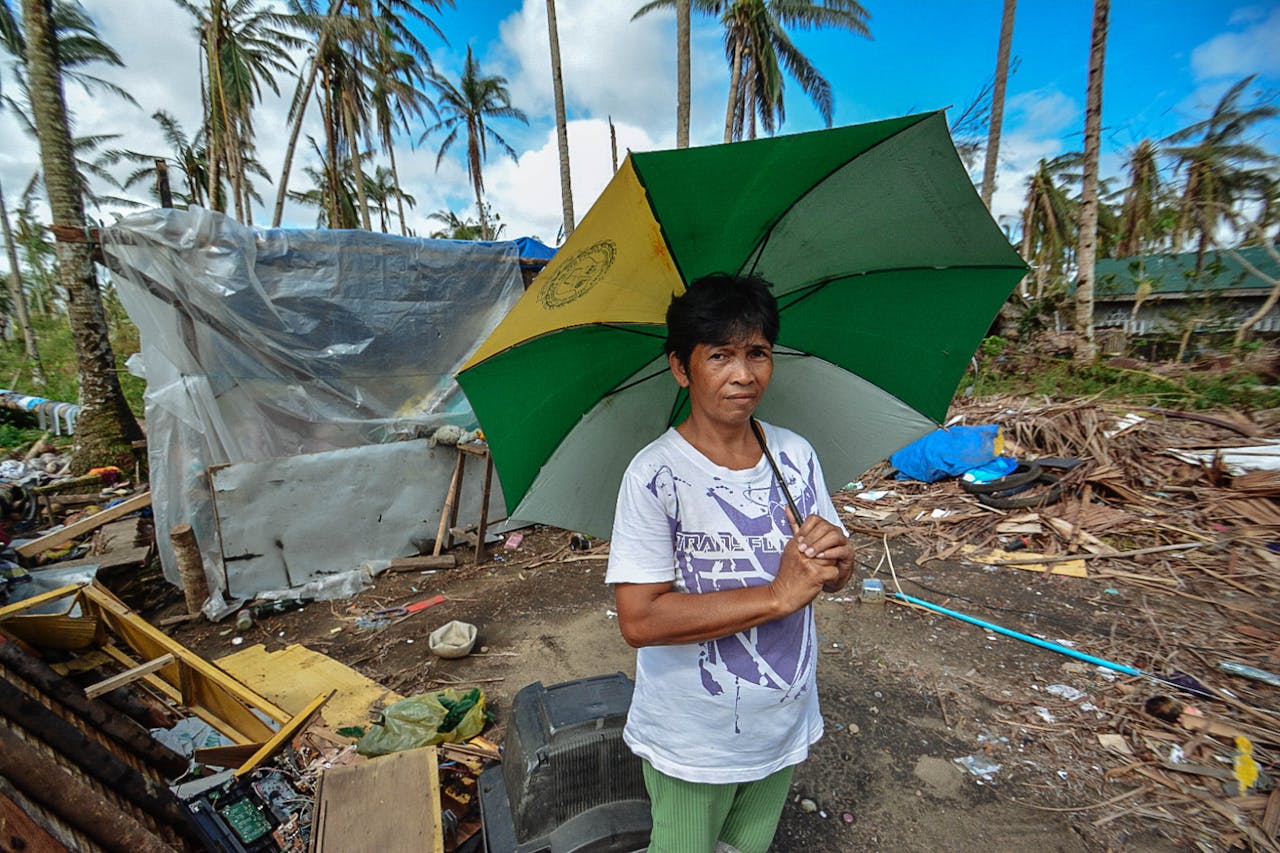
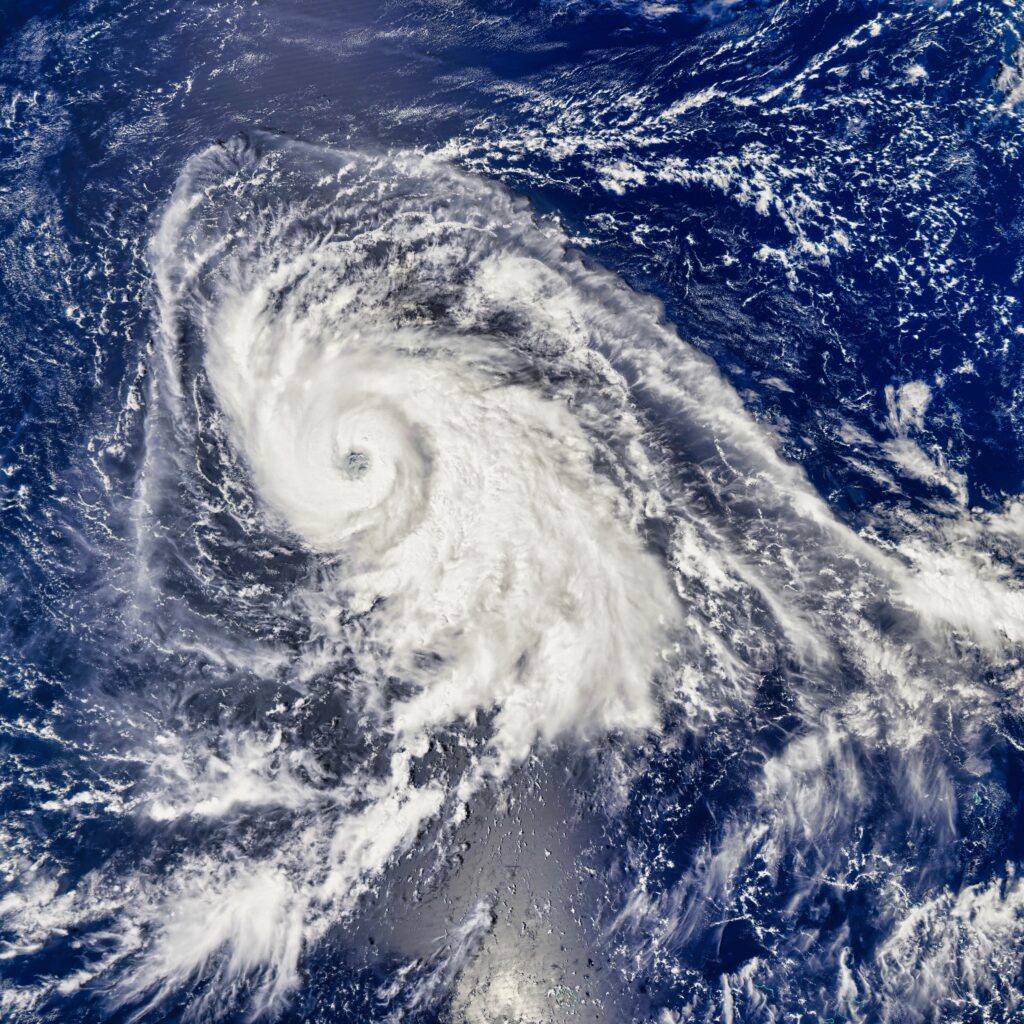
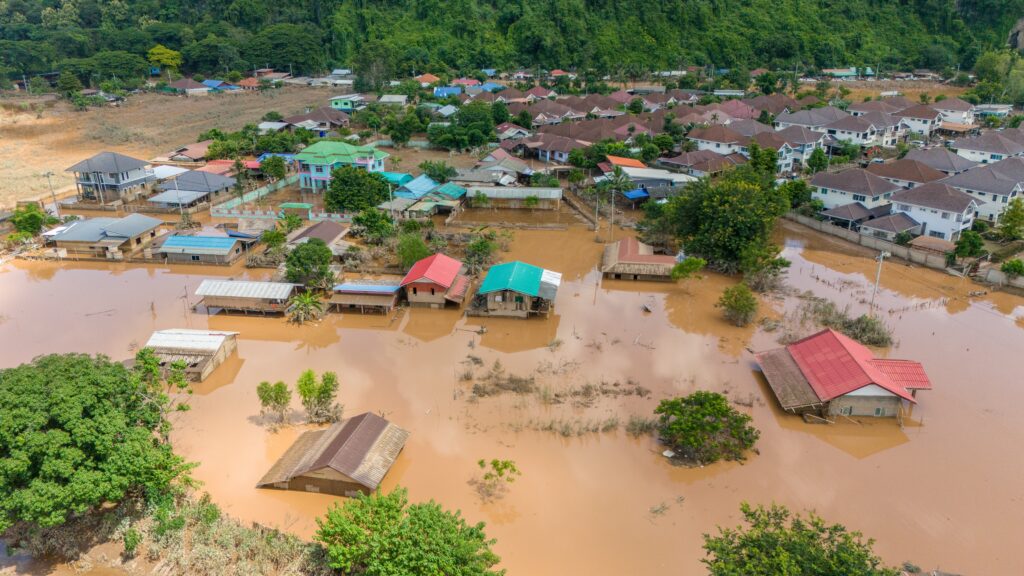
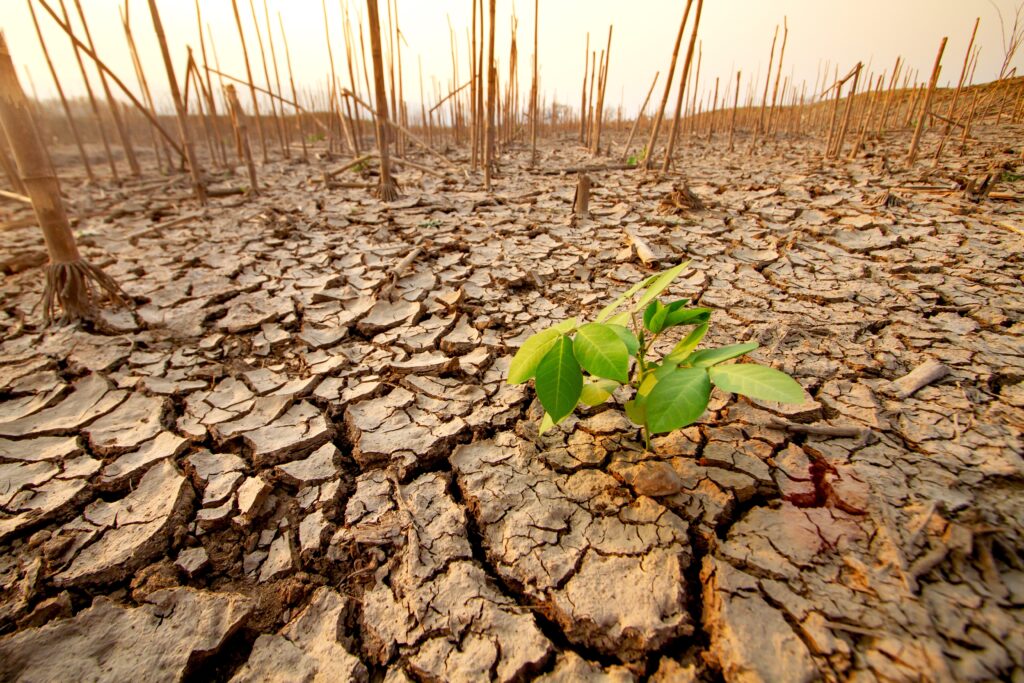
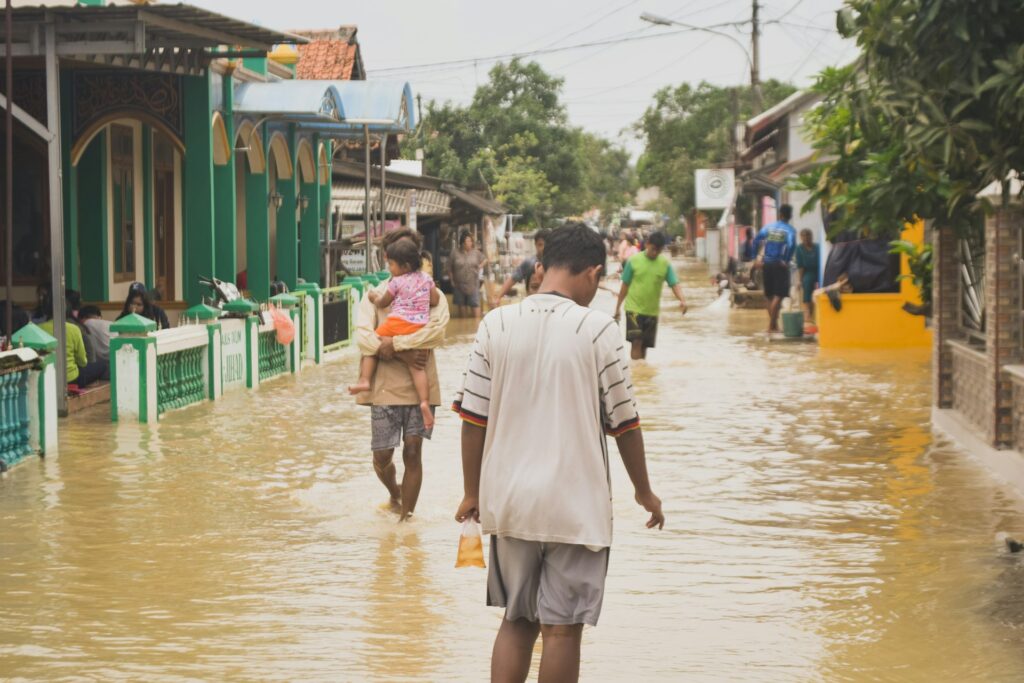
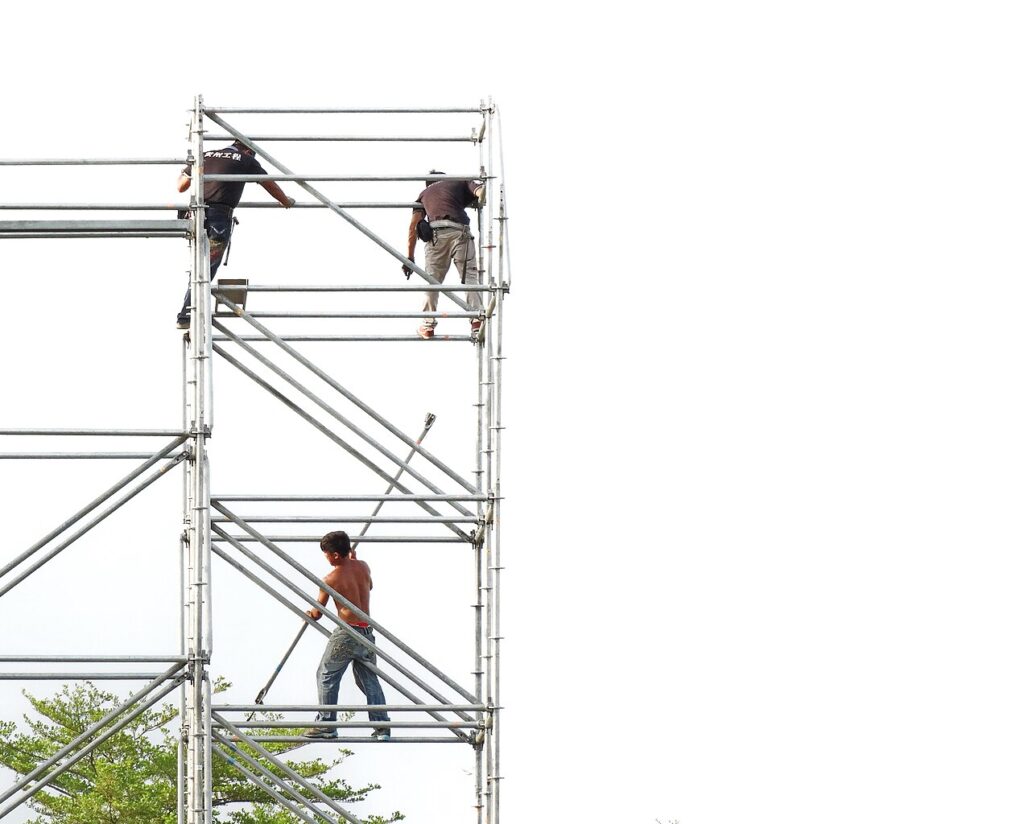
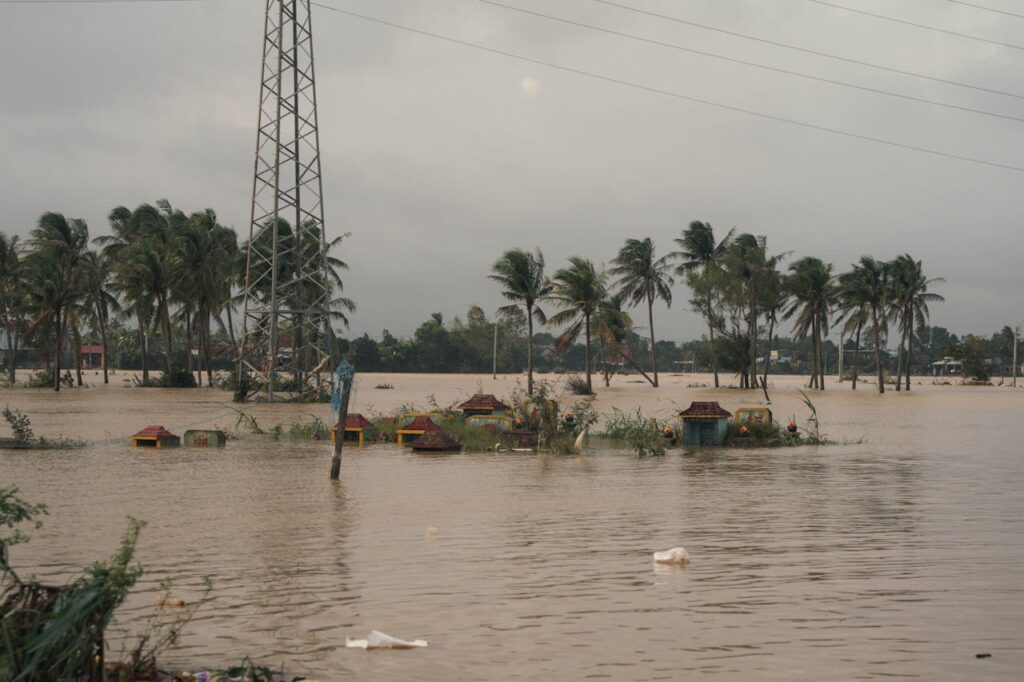

![Asia’s Water Crisis: Floods, Storms and Rising Seas [Part One]](https://www.climateimpactstracker.com/wp-content/uploads/2025/10/shutterstock_2020796807-1-1024x576.jpg)
